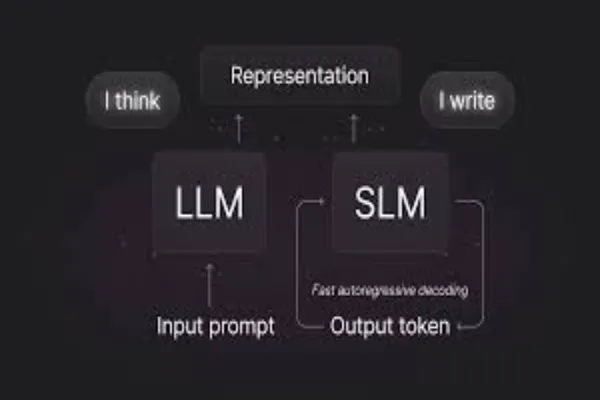SLM vs LLM: Which Is Better for Automated Invoice Processing?

In today’s day and age, nobody has the time or desire in this digital age to sit and spend hours typing out invoice information manually. That is why Automated Invoice Processing exists. It aids companies in reading, interpreting, and sorting invoices with the help of intelligent tools, and without any time or effort.
But the ultimate question is: What is that AI model that works perfectly for it? Is it an SLM-small language model or an LLM-large language model? We have summed up this entire debate of SLM vs LLM in the most simplified terms possible for you to ultimately choose the right one for your business.
What Is Automated Invoice Processing?
Let’s clarify what Automated Invoice Processing is before getting into SLMs and LLMs.
It’s the procedure of employing software or AI to automatically scan and pull information from invoices. This involves the invoice number, date, vendor name, amounts, taxes, and payment terms. Rather than a human being doing all of this manually, the software takes care of the heavy lifting.
This kind of automation helps in:
- Speeding up payments
- Reducing human errors
- Saving hours of repetitive work
- Keeping financial records clean and accurate
Now, the success of this automation often depends on the kind of AI model powering it—SLM or LLM.
What Is an SLM?
SLM stands for Small Language Model. Think of it as a smart but lightweight tool. It understands and processes language, but in a more limited way compared to its bigger cousin, the LLM.
SLMs are trained on small data sets. They are quick, inexpensive to execute, and can be specialized in specific tasks, such as reading one type of invoice format extremely well.
For instance, if you consistently get invoices from the same couple of vendors, an SLM can be trained to comprehend only those formats. It’ll be fast and won’t require much computing power.
SLMs are similar to scooters—simple to use, quick over short distances, and cheap. They’re a good fit for small businesses or groups with few invoice types.
What is an LLM?
LLM means Large Language Model. Such a model can draw patterns, meanings, and usages from the huge collection of data it trains on public website data. LLMs do pick up context, know trends, messy, odd formatting, and so on.
They are tough, adaptable, and highly smart. They can read and understand invoices from different formats-even if this is handwritten, poorly scanned, or full of jargon.
They are like the SUVs – tough, feature-laden vehicles for all kinds of terrains. LLM is the perfect fit for any company dealing with lots of different invoices coming from different countries, suppliers, and industries.
SLM vs LLM: Understanding the Core Differences
Now that you have an understanding of what each model does, let’s review SLM vs LLM in how they function when it comes to Automated Invoice Processing.
Speed and Cost
SLMs are faster because they’re smaller. They require less memory and computer power, so they cost less to operate. If your business needs quick results without spending too much on tech, SLMs are a great pick.
LLMs, being large and complex, are slower and more expensive to run. But they make up for it with deeper understanding and flexibility.
Accuracy and Flexibility
When the invoice format is fixed and clean, SLMs are highly accurate. But they may struggle when they see something new—like a different language, a handwritten note, or an odd layout.
LLMs shine in these tricky situations. Their deep knowledge helps them adapt and extract data even when the invoice isn’t perfect. They also learn from new examples, so they get better over time.
Setup and Maintenance
SLMs are easier to set up. If your team doesn’t have deep tech skills, you can still train and use SLM-based tools. They’re simple and user-friendly.
LLMs are more complicated to set up and need more technical expertise. You may require data scientists or technical support to operate the models, maintain updates, and optimize them for optimal performance.
Privacy and Security
Data privacy is one of the major concerns in Automated Invoice Processing. Several businesses are not willing to pass their invoice data to cloud-based systems.
SLMs may run on your internal computers or local servers quite easily, and that helps your information stay confidential and safe. LLMs generally require cloud computing, so you must go out of your way to keep sensitive data protected.
When Do You Need an SLM?
SLM is best if your organization is small or medium and handles inclined, formal invoices. For example, a retail business that deals with 10 vendors receiving identical forms of invoices should install their SLM.
They are also best when your main objectives are saving time, costs, and speed without the complication of setup.
If your organization is looking for a plug-and-play to start with Automated Invoice Processing, SLM is the solution.
When Should You Utilize an LLM?
LLMs are best suited for larger enterprises that receive hundreds or thousands of invoices from multiple sources. They may be international suppliers, logistics providers, or freelancers.
If you work with scanned invoices, multi-language documents, or documents with a lot of extraneous information, LLMs will do a better job than SLMs. They are also capable of much more advanced features, such as flagging suspicious line items, recommending better payment terms, or even summarizing invoice information. In fact, if you are going to grow that company and are looking for a system that will grow with you, then, LLMs will be an investment for the longer term.
Can You Use Both?
Yes! In fact, many smart businesses use both SLM and LLM models together.
Here’s how:
Use SLMs to handle the easy, everyday invoices that come in the same format. When a new or unusual invoice comes in, send it to the LLM for deeper analysis.
This hybrid approach gives you the speed and cost benefits of SLMs, plus the intelligence and flexibility of LLMs when needed. It’s the best of both worlds.
Real-Life Example
Let’s say you run a chain of bookstores. Most of your suppliers send invoices in a standard format. An SLM can handle those easily and quickly.
But then, you start importing books from Europe and Asia. The invoices are in different formats, sometimes with foreign languages or different tax rules. That’s when you bring in an LLM to understand and process those complex documents.
So instead of replacing one with the other, you build a smarter system by using both where they perform best.
Final Thoughts
Choosing between SLM and LLM depends on your business size, needs, and budget.
If your invoices are simple and structured, go with an SLM. It’s fast, affordable, and gets the job done with minimal fuss.
If your invoices are complex, come from various sources, and require a deep level of understanding, choose an LLM. It will offer you the intelligence and power you need for long-term success.
And if you want to get truly efficient? Use both. Let each model do what it does best.
The end goal is simple—save time, reduce errors, and make your invoice processing smoother than ever. Whether it’s SLM, LLM, or both, the future of invoicing is automated, and it’s already here.




